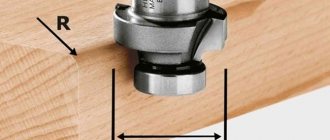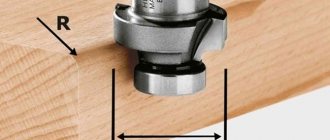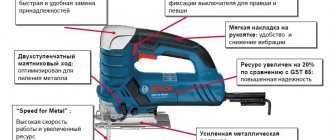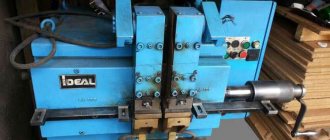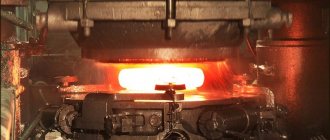Milling is the mechanical processing of metal. During this process, the workpiece is affected by a milling cutter - a cutting tool. No production can do without such metalworking. Before the development of computer technology, metal milling was carried out using manually operated machines. With the development of computer technology, CNC machines entered the metalworking industry. The essence of this technology is to remove excess metal from the workpiece and obtain a part of the desired shape. What types of milling are there and what products can be made with a milling machine?
If you need metal processing on a milling machine, then contact the specialists of our company. We will fulfill orders of any volume quickly and efficiently.
What is milling
In principle, hand-carved wood can be conditionally classified as milling. But there is a clear difference - only those types of processing that are carried out using a rotating cutter on manual or stationary machines are called milling.
If we exclude other simple woodworking techniques - sawing, hewing, planing, drilling, then there are two main directions in woodworking.
- turning - carving a rotating part to give the desired shape to the diameter of the part;
- milling – the formation of linear (not radial), longitudinal shapes.
The scope of application of milled parts is limitless. Such details can be found in many complex modern products. The operation is quite labor-intensive, but sometimes there is nothing to replace it with. Casting or stamping will not give accurate dimensions, or these methods cannot produce such complex formats. The only way left is milling.
What can be done with a wood router
It is quite possible to perform the following manipulations with wooden blanks:
- Cut grooves and recesses of absolutely any shape, from simple rectangular to oval and complex bends in the form of polylines.
- Make through and blind technological holes.
- Perform milling of edges and ends of wood blanks.
- Apply various ornaments and inscriptions to the surface of the workpiece.
- Copy details of any shape using so-called templates.
Working on a milling table
Having a milling table will make many operations easier for you. The quality of manufactured products will not be inferior to the level of professional milling machines. Here is a list of what can be made on a milling table:
- figured holes and grooves;
- connections and joints of parts;
- process and profile edges and ends.
Tables come in the following types:
- portable (mobile, portable);
- stationary (personal) tables.
The working surface of the table is equipped with the following tools:
- Side stop – serves to limit the cutting depth of the cutter. A comb and stops can be installed on the cheeks of the side stop to hold the workpiece.
- Positioner – comes complete with stop. Helps to accurately set the stop relative to the cutter.
- Angular stop - helps to set the profile of the ends and make a tongue-and-groove connection.
The router can be attached to the tabletop in two ways:
- It is permanently attached to a removable plate, which will subsequently facilitate its dismantling.
- Can be adjusted in height using a lift with a lever having a vertical axis. In addition, there is a design with a disk or lever on a horizontal axis.
Working with a hand router on wood
Products made with a tool such as a hand cutter:
- railings;
- racks;
- hangers;
- furniture elements.
You can start restoring old furniture. Related work during restoration, which the cutter can handle, will include inserting new locks, forming grooves for new connections, and applying various shaped patterns. The cutting depth is adjusted by a lifting mechanism (fixed distance between the pin and the washer), which connects the electric drive and the base of the router. To fix the distance from the edge of the workpiece, a straight guide is provided. The kit sometimes includes a circular guide, which is used for milling circles with a large radius. When milling circles of small diameter, it is quite enough to make do with technological holes for inserting a centering pin at a given distance from the cutter. The miter gauge will help when making grooves.
What kind of cutter to cut plywood with?
Compression or straight cutters are suitable for cutting plywood, since only when using them you are guaranteed no chips. If you use laminated plywood as a workpiece, other cutter geometries are quite suitable. Mills with a chip breaker are suitable for high-speed milling.
Main technological stages
All milling work begins with determining the dimensions of the future part or product.
When milling with hand tools, mainly in woodworking, most often they work without drawings or even sketches. It is enough to imagine and understand the desired result and decide on the dimensions. The photo below shows the simplest wood milling, edge rounding:
In industrial production, drawings of the future product are necessarily used. Therefore, the milling machine operator must be able not only to operate the machine, but also to read drawings. A fairly high qualification of the machine operator is also required.
When working on modern CNC machines, electronic versions of drawings and appropriate software are required. Here the manual skills of the machine operator fade into the background. And the most important thing is competence in modern computer systems. Although manual work skills are also required - you need to install the cutter, place the workpiece, and control the processing process.
After determining the dimensions for any type of milling, a suitable cutter is selected and installed. The workpiece is placed on the work table and the actual processing takes place.
Possible business problems and risks
Since the machine is controlled by numerical control, the operator practically does not take part in its operation. Therefore, the influence of the human factor is not relevant for this business. Common risks include:
- Material defects or poor quality: purchasing from a regular, reputable supplier will help you avoid the problem
- Increased competition: high quality products, attractive prices, additional services, and product exclusivity will help minimize the risk
- Lack of demand: indicates insufficient marketing activities, incorrectly chosen niche or pricing
With the right approach to business, risks can be avoided or their impact can be minimized.
The peculiarity of the business is that without ensuring stable sales volumes and established infrastructure, production should not be expanded. It is better to consolidate success by developing it, improving the quality of products, establishing production chains with partners, and retaining customers.
Types of milling on machines
There are three main types of milling.
- Terminal . It takes its name from the end mill used with the cutting end (end). It is used for making rectangular grooves, curved holes and windows, pockets and niches for various purposes.
- End _ This is the processing of large surfaces with cylindrical cutters with straight, fairly large cutting edges. The edges, side and horizontal surfaces and ends of workpieces are processed, which is why the operation is called end milling.
- Shaped . The most difficult type of processing. It can be used to manufacture products of any configuration. This could be the spiral teeth of a worm gear, a shaped sample of a wooden baseboard or railing. Milling cutters of various profiles are used, including prefabricated modular ones.
In metalworking, sometimes milling refers to cutting metal using a cutter. But such an operation can be performed in a large number of different ways, both in metal and woodworking, so the operation is conditionally classified as milling.
Industrial portal milling machine manufactured in 1978.
In terms of dimensional accuracy and quality of the resulting surface
At the first stage of milling, rough processing occurs. The equipment used removes a thick layer of material at low speeds. Such devices are characterized by high power and rigidity. The resulting surface has roughness (Ra from 6 to 20). The cutter applies the approximate contours of a product whose size is larger than necessary.
During the finishing milling stage, a minimum layer of material is removed at high speed. The resulting workpiece is characterized by precise dimensions and cleanliness of the resulting surface. The roughness index Ra varies from 1.25 to 1.6. The accuracy rate is 6–7.
In both the first and second cases, operations are performed on different equipment. There is a concept of semi-finish milling. It involves a combination of two types of processing, but different tools are used.
CNC
The machine tool industry today offers hundreds of options for a wide variety of CNC machines for processing any materials. From the smallest for small home workshops, to the most powerful for industrial production.
The main series of such machines:
- lungs;
- professional;
- industrial;
- special.
Light ones (among them the lightest) cost from 150 thousand rubles.
Professional is an intermediate option between light and industrial options. These include wood milling and engraving machines costing from 200 thousand rubles. up to 600 thousand rubles.
Industrial - for continuous production, cost more than 1 million rubles.
Special ones are most often designed individually for specific tasks and details. These include machines for milling stones, as well as small, ultra-precise ones for jewelry.
3D milling
Modern 3-6 axis 3D CNC machines have brought this method of processing various materials to a fundamentally new level. Today there are no parts that such machines cannot make. They even make sculptures with their help.
The most important points are the correct selection of cutters for different materials and the appropriate software. There is both free software on the market, including open source software for possible modification, and paid packages created specifically for the manufacture of specific parts and tasks.
Basic software standards: CAM System and CAD system
As an option, programs are offered for free testing for a month.
The capabilities of such a machine in woodworking can be seen in the following video:
Demand and competition analysis
The first thing you need to do is study the needs of potential clients for Internet services: Wordstat, Yandex.Vzglyad, as well as the offers and pricing policies of competitors. Think about how you can stand out from them, what additional services you can offer. For example, free delivery of orders, furniture designer services, home measurement, and others.
The versatility of the machine allows you to work with different niches and target audiences, both in the private and corporate spheres. Therefore, gaining a foothold in the service market will not be difficult. The demand for products made from natural materials is growing from year to year. In demand: pieces of wooden furniture, interior parts, original souvenirs, toys, musical instruments and others. All this can be produced on a universal CNC machine .
Equipment
The main equipment, of course, is the milling machine itself or a hand router.
The main components are cutters for various purposes and profiles. However, there are no technological lines or small production facilities consisting of only one machine.
Before the workpiece is processed, it is most often prepared on other equipment.
- format cutting machines;
- miter or hand-held circular saws;
- gas cutting or laser cutting of metal.
Sometimes it is necessary to prepare the workpiece in terms of thickness. Then it is adjusted to the desired size using the following equipment:
- wood - trimming on circular saws or band saws, planing on a jointer or planer;
- metal – cutting to thickness in different ways, preliminary rough milling.
Stationary machines
In addition to the modern CNC machines described above, of which there are many, there are also simpler options.
These are the simplest wood milling machines, consisting of a table, a motor, a cutter landing shaft and a guide for manual feeding of the workpiece. There is also an option with installing a manual router into the table upside down.
More complex ones are industrial milling machines for wood and metalworking. They can have automatic feeding of workpieces, regulation of the position of the cutter, positioning of workpieces, etc. Quite a lot of these old machines, manufactured before the 21st century, are still in working order. Although there are fewer and fewer of them left.
Hand milling machines
This type of tool is sometimes called a "milling machine." This is so because a hand router is a completely self-sufficient tool. It has everything that a stationary machine has:
- own electric motor;
- rotating spindle with mount for different cutters;
- working platform with adjustable cutter immersion depth.
This tool is intended for manual work, so there is no point in comparing it with large industrial machines. The manual router copes with its tasks to the fullest extent. Moreover, it has its own number of advantages over stationary options:
- mobility , ability to work anywhere;
- the ability to process large-sized workpieces that do not fit on the desktop of stationary machines;
- great versatility . Unlike special machines, a manual milling machine can perform all basic operations for milling soft materials;
- affordability . The cost of a manual milling machine is tens, sometimes hundreds of times less than the cost of stationary machines;
- compactness . This router does not require large areas to operate and store. When they are not using it, it is simply removed to the side, freeing up space.
Modern manufacturers offer the widest selection of such tools of different power, from 350 W to 2500 W.
In addition to universal ones, there are also special-purpose models - lamella, edge, filler.
Crafts using a CNC router: top do-it-yourself super products
A CNC milling machine is equipment that allows processing of various materials. Crafts made with CNC milling are popular in different countries. The device is most in demand when processing wood. But it can be used to process other materials as well.
A CNC router ensures the accuracy and quality of manufactured crafts. If you have such a unit, you can start a small business.
Using a Milling Machine
A CNC milling machine is a modern mechanism that has many advantages. But purchasing it does not guarantee that the craft will be of high quality. It is recommended to use the machine if you have education or experience in this field.
Milling machines can produce various parts. They are used in:
- manufacturing of plastic products;
- leather goods production;
- production of metal molds (used in the shoe industry);
- production of blow molds of complex design;
- in hot foil stamping (cliché production);
- production of instrument panels;
- manufacturing super wood products.
The most used base in the processing and manufacture of wood products is plywood. It meets flexibility standards, making it easier to use. Before you start milling plywood, it is recommended to acquire a sufficient amount of material. During production, some of the workpieces will be damaged. When carrying out milling tasks, the appearance of damaged workpieces is not uncommon.
The second important point is the purchase of cutters. This element carries out the bulk of the functions, so it bears a heavy load. Breakage of cutters is one of the most common problems when milling. If you plan to carry out a large amount of work, you should stock up on spare cutters. Productivity and accuracy of work depend on the quality of the part.
The third important element when milling is sandpaper. Without it, it is not easy to complete the full production of the product. It provides polishing. The material is quickly erased, but has a low cost.
The best ideas for products made with a router
1. Hot stand. Made from wood, the product has an original puzzle shape. Suitable for both gift and personal use (at home or in business).
2. Mobile phone holder. Tired of looking for a place to put your phone while it's charging or while you're watching a video? The solution was found: a universal holder made of wood. Made for your phone model, it may have a connector for the cord.
3. This summer's hit - a spinner can also be made on a CNC machine. You can make a variety of inscriptions on the toy: first name, last name, or any other phrase. For manufacturing you need plywood and bearings.
4. Decorative inscriptions made of wood. Phrases such as “Home”, “Family”, “Love”, etc. are considered popular.
5. Toys. Children love interesting things, so they will definitely like crafts using a router! Make Gena the crocodile, a car, an airplane, a dagger or a pistol, and your child will be pleased.
6. Caskets. We have already discussed detailed instructions for creating a box in our article. The box can be heart-shaped, square, round, with or without a variety of patterns.
7. Necessary things for the home: hanger, table, chair, shelf. These decorative items are also easy to make on a router. It will look stylish and original.
8. Pictures. Modern paintings that are sold in the store have a fairly high price. An alternative option could be a hand-made wooden picture. It could be a picture of animals, people, motivational inscriptions, or even a photo of yourself.
9. Perpetual calendar is a popular thing today. Imagine: you don’t need to change the calendar every year, you just need to make it once on the machine. You can add a beautiful inscription or drawing to it. It could even be a corporate gift to any company.
10. Keychains. Do you want a keychain with your name, favorite car, or pet? It’s easy: a CNC machine will fulfill your desire. The required keychain is cut out on the machine, and then the necessary parts are added (ring, and the connection for the ring and the keychain itself).
Please note that for some products one milling cutter is not enough, and you may need the help of a laser or milling and engraving machine. It all depends on the craft and its features.
DIY CNC router
A CNC router is a relatively expensive device. When implementing business projects, the availability of start-up capital may be limited, and the purchase of such equipment will require significant costs. A DIY milling machine will solve the problem.
The unit is produced on a circular table and a drilling machine. Renting tools will save you money. The machines themselves can be made of plastic. It is sold in construction stores.
The assembly of a CNC router is carried out in several stages:
- creating a diagram, processing material, drilling load-bearing holes;
- manufacturing load-bearing blocks using a circular saw and drill (identical parts are produced that are connected and form a block);
- cutting parts that form the base frame;
- assembly of base parts by drilling;
- installation of racks and spacers;
- manufacturing a threaded rod from a nut and a spring;
- installation of the milling part;
- assembling a table for work (the table is assembled from high-strength materials in convenient sizes);
- production of couplings (plastic can be used);
- production of engine brackets (you can use a metal profile);
- assembly and testing of the unit.
The control of the machines is carried out thanks to the program. The most suitable one is "kcam". The motor drivers are connected to the LPT. Another suitable program is the arduino numerical software. It assumes the presence of firmware and interface. No code is required to run. Milling is carried out along the contour to a given depth, or using a laser. Standard firmware for a router does not require software. When working with the device, you should pay attention to safety rules.
vseochpu.ru
Milling cutters
This small detail makes a huge difference. The machine only serves its work, and it is the milling cutter that directly processes the material. Therefore, the quality of processing depends largely on the cutter. With hundreds of varieties of milling machines and different cutters available, thousands of varieties are used. The main difference is in three respects:
- Mounting method. Shell cutters have a hole in the middle and are mounted on the spindle (shaft) of the machine. The photo shows a shear cutter for woodworking with replaceable knives:
- Milling cutters with shanks are clamped in collets. In the photo, a set of such cutters for a hand router:
- Profile . Simple, straight and profile cutters of various configurations are used. Nozzles with straight cutting edges are used to make the same straight recesses. Profiles form a sample on the workpiece that repeats the profile of the cutter itself.
The exception is 3D CNC machines. They cut complex profiles and reliefs with a simple thin end mill. Profiles on the part are formed due to the mobility of the cutter itself in three coordinates.
On 4-6 axis machines, cutters not only move vertically and horizontally, but can also tilt.
Milling materials
The cutter material must be stronger than the material being processed. If this is not a problem for soft materials, then in metalworking special heavy-duty alloys are used to make cutters. Some machines are equipped with a system for lubrication of the machined surface and the cutter with an oil-water emulsion. It lubricates the cutting area, removes small chips and cools the cutter.
Tree
This is a soft material. It is processed both by hand milling machines and by powerful industrial machines.
A hand router can be used to do almost all types of milling work, but in small quantities.
On industrial machines, moldings are made in-line - lining, floorboards with a groove/tenon connection, baseboards, corners, round products in two passes with a semicircular cutter, etc.
Despite the softness of the material, cutters are made of hard alloys so that they retain their sharpness for a long time and are less abraded by friction. As a rule, these are “high-speed cutters”, alloys such as R6M5, R6MZ and R12 (HSS in Western markings) - steel containing tungsten, molybdenum and vanadium in different proportions.
Plywood
Plywood sheets are large-sized material of small thickness. Sometimes it is necessary to mill edges, cut out non-through and through ornaments, curved or straight lines. Hand-held routers are better suited for working with large sheets. It is better to move a small tool relative to the sheet than to move a bulky sheet relative to a stationary router.
For plywood, universal cutters are used (hardwood, plywood, MDF, etc.). The hard adhesive resins in plywood can dull the cutter faster than when working with wood. Therefore, it is better to use high-quality cutters made of harder alloys.
Furniture board
Furniture board is wood, wooden beams glued together. Processed in the same way as wood. If the sheet is large, it is better to use a hand router, as is the case with large sheets of plywood.
MDF, OSB, laminated chipboard (LDSP) and plain chipboard
These are materials containing wood similar in structure. They are based on crushed wood, sawdust or shavings, compressed and glued under pressure at a certain temperature with adhesive resins. The difference is in the size of the wood particles and the manufacturing method. They are milled in the same way as plywood. Either universal or special cutters for such materials are used.
It is extremely undesirable to allow the cutter to overheat to prevent burning of adhesive resins, wood and the release of acrid smoke. Overheating of the cutter is possible when the cutter moves too quickly, the speed is too high, or the cutting edge of the cutter is dull.

